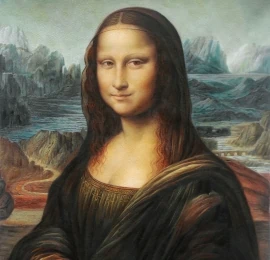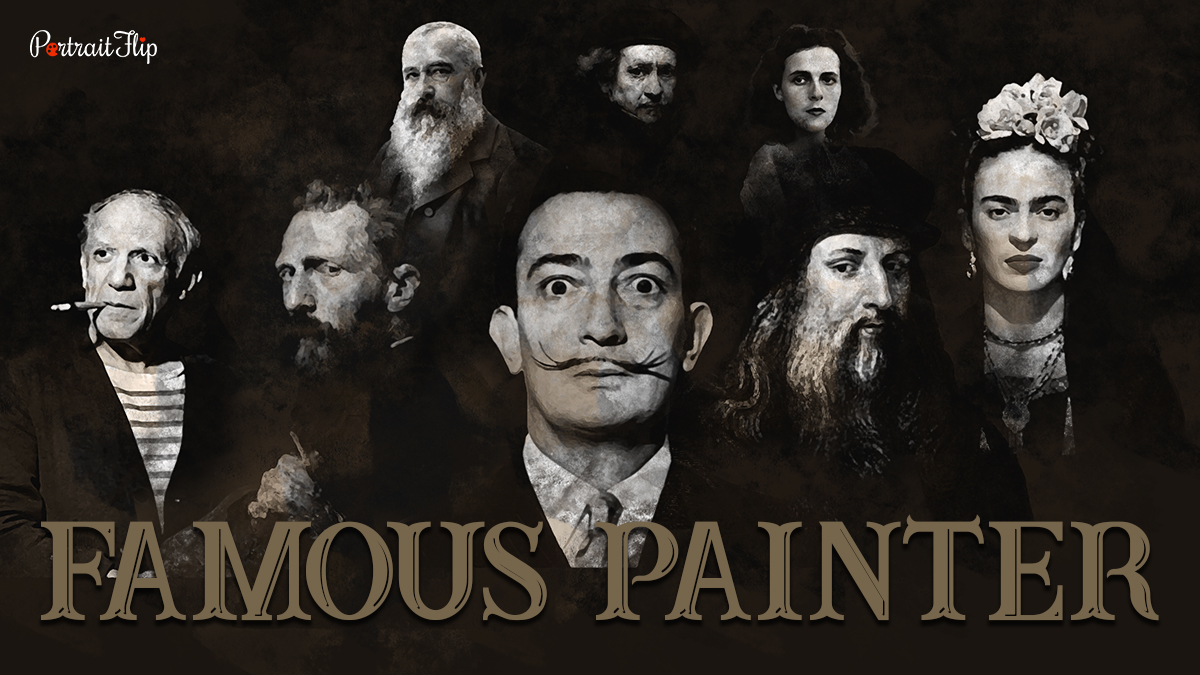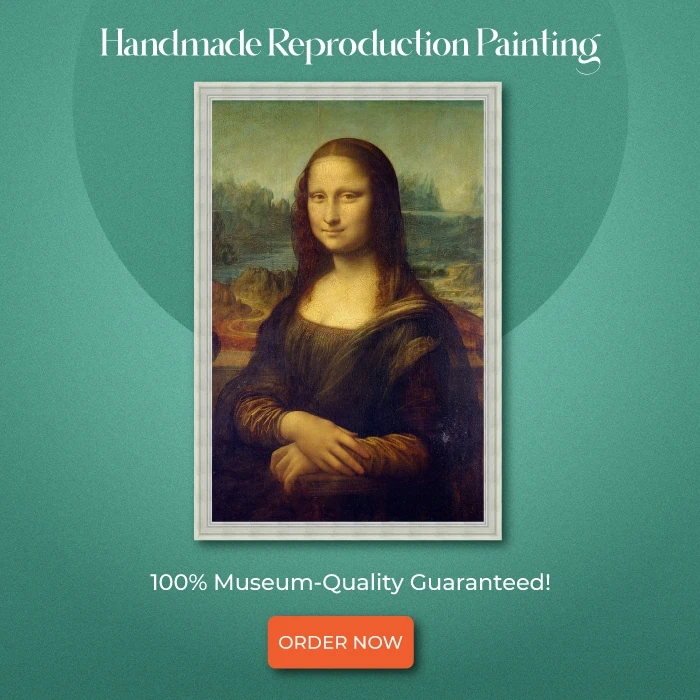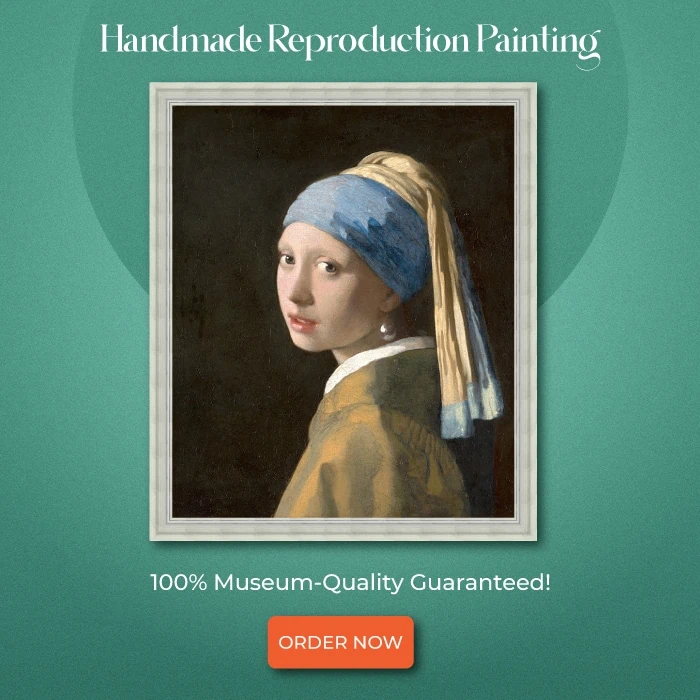As a human race our lives are greatly influenced by art and everything artsy!
So, don’t you think we owe it to all the famous painters in the world for creating masterpieces that moved our whole civilization?
For starters, how many famous artists do you know?
Struggling there? Worry not, because you have landed on the right page.
Here’s a comprehensive list of the greatest and most famous painters of all time!
A list of renowned artists who’ve chosen unconventional paths to create some of the world’s most discussed and talked-about paintings.
It is commendable how these famous painters made the world believe in the idea of breaking stereotypes to create history.
Each one of the artists you will come across here have gone out of their way to hold onto their unique style of art.
Every artist who became notable did something unusual and unconventional.
While some became famous in their lifetimes, others found their fame after their deaths.
I’ve listed down our top picks—the most famous painters of all time, from the Renaissance to the modern art movement—who’ve captivated a massive audience and got them into art.
Table of contents
- 1. Leonardo da Vinci
- 2. Vincent van Gogh
- 3. Pablo Picasso
- 4. Michelangelo
- 5. Raphael
- 6. Claude Monet
- 7. Sandro Botticelli
- 8. Salvador Dalí
- 9. Rembrandt
- 10. Frida Kahlo
- 11. Pierre-Auguste Renoir
- 12. Johannes Vermeer
- 13. Paul Cezanne
- 14. Gustav Klimt
- 15. Caravaggio
- 16. Wassily Kandinsky
- 17. Jackson Pollock
- 18. Édouard Manet
- 19. René Magritte
- 20. Mark Rothko
- 21. Jan van Eyck
- 22. Georgia O’Keeffe
- 23. Andy Warhol
- 24. Edvard Munch
- 25. Caspar David Friedrich
- 26. Henri Matisse
- 27. Francisco Goya
- 28. Titian
- 29. Eugene Delacroix
- Ending Note
- Frequently Asked Questions
1. Leonardo da Vinci

The world would never be able to pay him back for the contribution he made to several realms, including engineering, draftsmanship, art, and architecture.
The Renaissance painter, Leonardo da Vinci, is the creator of some of the world’s most expensive pieces of art—Salvator Mundi, the Mona Lisa, and others.
Da Vinci is the most legendary painter of all time, having spent years reading, researching, and innovating.
His clarity of thought, artistic skills, and mastery of the subjects he picked were astounding.
Da Vinci was also the biggest promoter and contributor of Renaissance art and was revered for his innovative concepts and designs, which were ahead of their time.
| Name | Leonardo di ser Piero da Vinci |
| Born | 15 April 1452 |
| Died | 2 May 1519 |
| Notable Artwork | The Last Supper, Mona Lisa, Salvator Mundi, and Virgin of the Rocks |
| Art Movement | High Renaissance |
| Nationality | Italian |
| Medium | Painting |
2. Vincent van Gogh

Vincent Van Gogh became the most beloved and famous artist after his death.
He was regarded as the most struggling painter of his time, suffering from various mental ailments.
He wasn’t a painter until his 20s, but his life changed when he met Paul Gaugin, who later became a person behind Van Gogh’s artistic success.
But he was determined and serious about art, and it was the only way to heal from a mental breakdown.
The famous post-impressionist painter Vincent Gogh also had a profound impact on German Expressionism.
He was highly inspired by Dutch genre artwork and Japanese woodblock prints and gifted the world some stunning pieces of art.
| Name | Vincent Willem van Gogh |
| Born | 30 March 1853 |
| Died | 29 July 1890 |
| Notable Artwork | The Starry Night, Sunflowers, and Wheatfield with Crows |
| Art Movement | Post-Impressionism |
| Nationality | Dutch |
| Medium | Painting |
3. Pablo Picasso

The contribution and journey Pablo Picasso had were truly worth-knowing.
Spanish born painter, Picasso, contributed significantly to various realms, including art, sculpture, literature, and others.
He was the most prolific painter of Cubism, whose art style wouldn’t easily be copied but could be identifiable from miles away.
No other painters worked as hard as Picasso to build the avant-garde movement.
Also, he’s the muse to millions throughout his career, who worked significantly from the Blue to Rose period.
The world may admire his work and read about it, but for the longest time, he lived a depressing life, during which he produced his legacy of Cubism art.
| Name | Pablo Ruiz Picasso |
| Born | 25 October 1881 |
| Died | 8 April 1973 |
| Notable Artwork | The Old Guitarist, The Weeping Woman, Guernica, La Vie, and Les Demoiselles d’Avignon |
| Art Movement | Cubism and Surrealism |
| Nationality | Spanish |
| Medium | Painting |
4. Michelangelo

The style, the thought process, and the artistic work of Michelangelo were ahead of their time.
Michelangelo would regard himself as a sculptor, but his artistic work came out so intense and majestic that he cemented his name as one of the most famous painters in the history of art.
Most of his art was sculpting and before he turned thirty, he had already completed two world’s most famous sculptures, David and Pieta.
The famous painter’s influence on art lovers and fraternities was immense.
Michelangelo’s famous artworks, mainly the Sistine Chapel, The Creation of Adam, and The Last Judgment, inspired countless artists.
| Name | Michelangelo di Lodovico Buonarroti Simoni |
| Born | 6 March 1475 |
| Died | 18 February 1564 |
| Notable Artwork | Sistine Chapel ceiling, The Creation of Adam, and The Last Judgment |
| Art Movement | Renaissance and Mannerism |
| Nationality | Italian |
| Medium | Painting |
5. Raphael

Raphael was undoubtedly the most talented and famous painter, but he died at a very young age.
A rare talent who showed us what truly driven artists could do if given a fair opportunity.
He became an orphan at the age of 11 and lost almost everything at an early age.
His artistic career was short but rewarding and inspiring, as he was seen as one of the prime painters of Renaissance art.
He was into religious art, as most of his works’ subjects were taken from the Bible, which resulted in him creating some of the finest Jesus artworks.
The most notable work in Raphael’s portfolio was the Sistine Madonna!
| Name | Raffaello Sanzio da Urbino |
| Born | April 6, 1483 |
| Died | April 6, 1520 |
| Notable Artwork | Sistine Madonna, Transfiguration, and The School of Athens |
| Art Movement | High Renaissance |
| Nationality | Italian |
| Medium | Painting |
6. Claude Monet

Claude Monet was a prolific painter, but he remained an underrated figure for most of his career.
He wouldn’t make a single work of art but a series of paintings under his keen observation, using painting techniques he believed in.
The famous artist was the backbone of Impressionism; in fact, his work, Impression, Sunrise, pioneered the title of the movement, which drove many artists to contribute to this movement.
Famous impressionist Monet would make art by observing the subject under different aspects.
These would be weather conditions, circumstances, and seasons, and they would turn into masterpieces!
| Name | Oscar-Claude Monet |
| Born | 14 November 1840 |
| Died | 5 December 1926 |
| Notable Artwork | Poplars, Haystacks, and Rouen Cathedral series |
| Art Movement | Impressionism |
| Nationality | French |
| Medium | Painting |
7. Sandro Botticelli
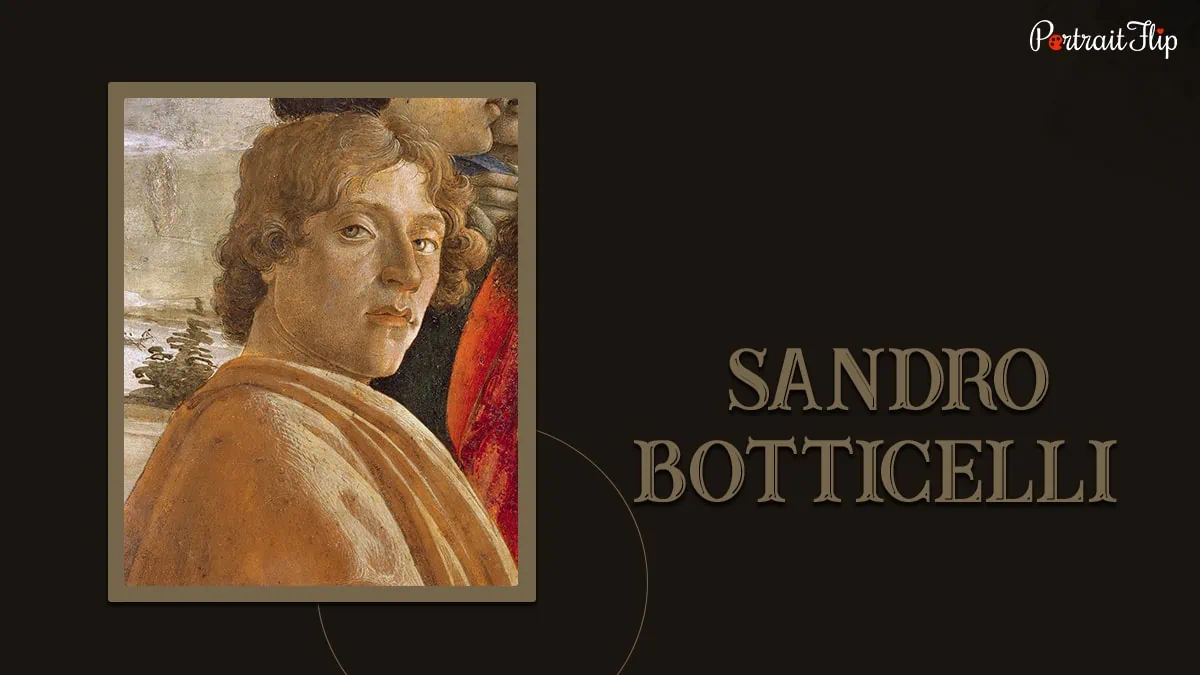
Famous artist, Sandro Botticelli, is well known for his fine use of brushstrokes and his representation of religious and mythological characters.
Sandro’s artwork was full of scenes and stories made with such fascination that they’d rekindle your imagination or perhaps make you think about their existence and backstory.
Most of his works were commissioned by the Medici Family, through whom he saw and tasted the elixir of life.
However, their financial withdrawal made his life difficult, as he spent his remaining years in poverty until he died in 1510.
| Name | Alessandro di Mariano di Vanni Filipepi |
| Born | c. 1445 |
| Died | 17 May 1510 |
| Notable Artwork | Primavera, The Birth of Venus, and The Adoration of the Magi |
| Art Movement | Italian Renaissance |
| Nationality | Italian |
| Medium | Painting |
8. Salvador Dalí

Salvador Dali was the most influential painter of Surrealism.
The approach he’d take to produce art was astounding, as he’d draw images and scenes that appeared in his dreams.
Dali’s paintings were drawn in weird ways, and these are the results of his keen interest in the study of the subconscious mind.
The famous Dada painter was heavily influenced by Austrian psychologist Sigmund Freud—who apparently introduced him to this subject.
Through him, he learned the power of the subconscious mind, which can also be used in producing artwork!
| Name | Salvador Domingo Felipe Jacinto Dalí i Domènech |
| Born | 11 May 1904 |
| Died | 23 January 1989 |
| Notable Artwork | The Persistence of Memory and The Great Masturbator |
| Art Movement | Cubism, Dada, and Surrealism |
| Nationality | Spanish |
| Medium | Painting |
9. Rembrandt

Rembrandt was one of the most prolific and best painters ever produced by the Dutch Golden Age.
He was one such famous painter who didn’t work in a foreign land. But his skills and works were discussed by art lovers from different parts of the world.
The beauty of his work showed what wasn’t real; his ideology perhaps discomforted his contemporaries.
Because his focus wasn’t on glorifying the subject matter but put forward the real images in their true manners.
The Baroque artist conceptualized and produced the world’s most famous stolen work, The Storm on the Sea of Galilee!
| Name | Rembrandt Harmenszoon van Rijn |
| Born | 15 July 1606 |
| Died | 4 October 1669 |
| Notable Artwork | The Night Watch, Danae, The Storm on the Sea of Galilee, and The Jewish Bride |
| Art Movement | Dutch Golden Age and Baroque |
| Nationality | Dutch |
| Medium | Painting |
10. Frida Kahlo

Frida Kahlo is one of the most talented and legendary painters in Mexico.
Kahlo, the most-loved painter, went through several turbulent times, from a tumultuous marriage with Diego Rivera to a tragic road accident.
Frida Kahlo’s artwork is a reflection of the agony, depression, and disparity she witnessed throughout her lifetime.
Communism was in her blood. Maybe that’s why she was criticized by many. But her work was and still continued inspiring people to this date.
Most of the Mexican paintings that garnered the attention of Europeans had some sort of connection to and touch of Frida Kahlo’s works.
| Name | Magdalena Carmen Frida Kahlo y Calderón |
| Born | 6 July 1907 |
| Died | 13 July 1954 |
| Notable Artwork | Self Portrait in a Velvet Dress and Henry Ford Hospital |
| Art Movement | Surrealism, Magic realism and Naïve |
| Nationality | Mexican |
| Medium | Painting |
11. Pierre-Auguste Renoir

Renoir, a notable painter of French impressionism, garnered a large following with his distinct and forceful styles.
Most of Renoir’s paintings featured his loved ones; he was among some famous artists who displayed several outdoor scenes in their art.
The famous painter never focused on producing accurate images, but depicting more candid scenes that captured raw emotions.
Renoir’s Luncheon of the Boating Party had relevance and fame in nature’s cape and landscape art, which displayed his love for free and expressive brushstrokes.
| Name | Pierre-Auguste Renoir |
| Born | 25 February 1841 |
| Died | 3 December 1919 |
| Notable Artwork | The Large Bathers and Bal du moulin de la Galette |
| Art Movement | Impressionism |
| Nationality | French |
| Medium | Painting |
12. Johannes Vermeer
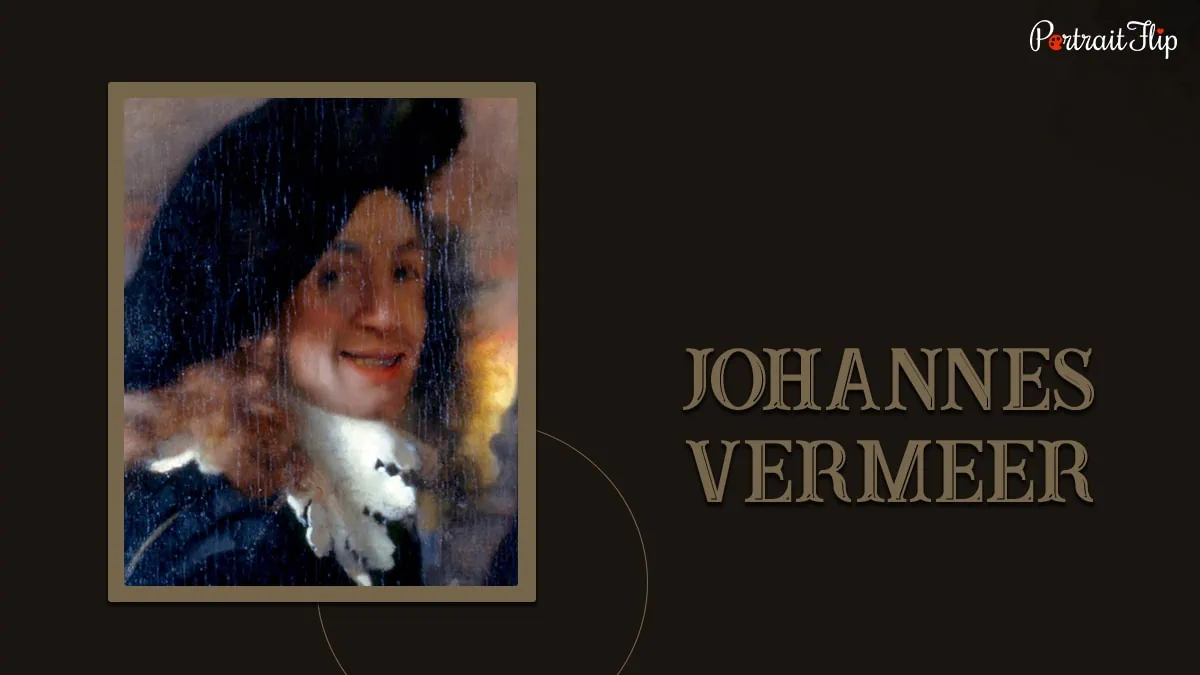
The 17th Century’s most famous artist, Johannes Vermeer, stunned the world with his creations like The Milkmaid, Girl with a Pearl Earring, and others.
The famous painter wasn’t particularly popular during his lifetime; his works gained recognition decades after his death.
Vermeer’s paintings would depict art in a subtle way, consisting of realistic details that no other famous painters would have acquired at the time.
Besides, his skills and knowledge in portrait painting caught the attention of aspiring European painters.
The reason behind this was his keen interest in capturing domiciliary scenes and outdoor scenarios.
| Name | Joannis Vermeer |
| Born | 31 October 1632 |
| Died | 15 December 1675 |
| Notable Artwork | Girl with a Pearl Earring, The Milkmaid, and The Little Street |
| Art Movement | Dutch Golden Age and Baroque |
| Nationality | Dutch |
| Medium | Painting |
13. Paul Cezanne

Paul Cezanne’s work may have been rejected several times, but his determination and consistent effort left an indelible mark on 20th century art.
Cezanne was well recognized for his work, bridging the gap between impressionism and Cubism.
He wasn’t interested at all in what others would think of him. Maybe because of that, he was so determined and became the man he is known as today.
The famous painter’s work showed his intelligence in certain subjects, for example, the depth and hidden meaning in representing geometric planes and shapes.
| Name | Paul Cézanne |
| Born | 19 January 1839 |
| Died | 22 October 1906 |
| Notable Artwork | The Card Players, The Large Bathers, Pyramid of Skulls |
| Art Movement | Impressionism and Post-Impressionism |
| Nationality | French |
| Medium | Painting |
14. Gustav Klimt
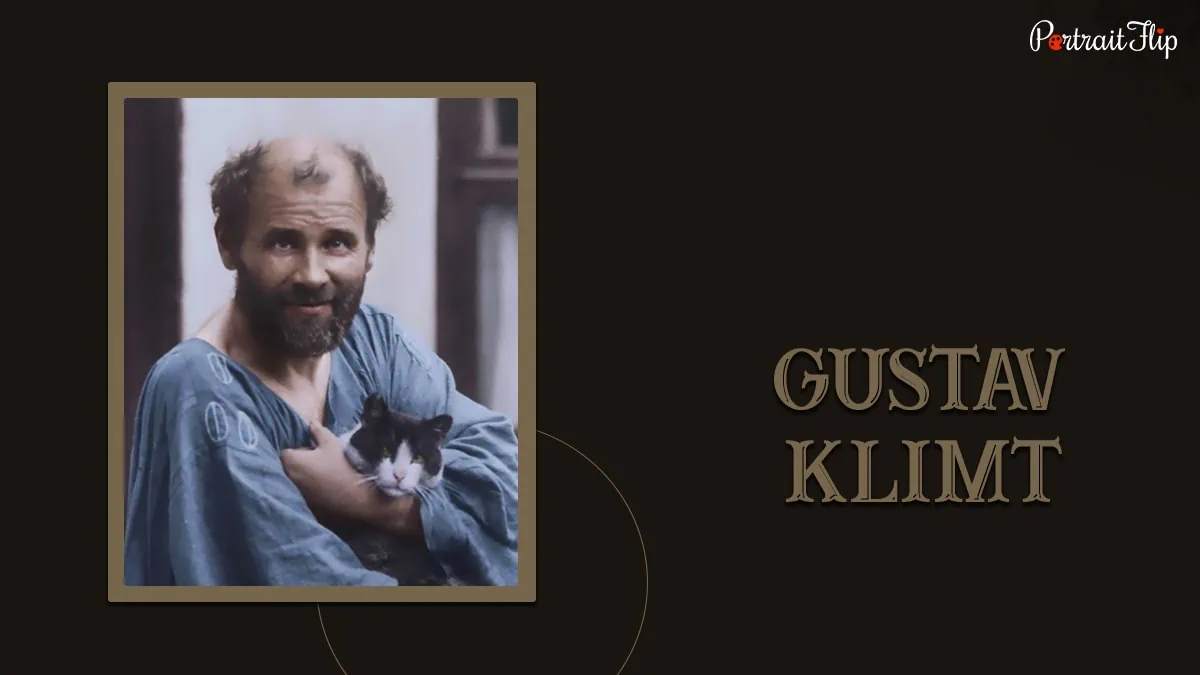
The artistic journey, Gustav Klimt was a part of, was inspiring.
He was a well respected artist from Vienna, Austria, who produced magnificently detailed and studied art.
Some of his famous works are The Kiss, The Portrait of Adele Bloch-Bauer, and Lady With a Fan.
Gustav’s paintings have a few common elements; one of which is gold leaf.
Gustav was a devotee of art who was celebrated for iconic works made in the Art Nouveau style and became an important figure in the style.
In Later years, he became adept at large murals and oil paintings.
| Name | Gustav Klimt |
| Born | 14 July 1862 |
| Died | 6 February 1918 |
| Notable Artwork | The Kiss, Death and Life, and Portrait of Adele Bloch-Bauer I |
| Art Movement | Vienna Secession, Symbolism, Modern art, and Art Nouveau |
| Nationality | Austrian |
| Medium | Painting |
15. Caravaggio

Caravaggio was the spine, the cornerstone, and the most influential figure of Baroque art.
The famous painter was known for his contrasting use of colors between light and dark; he set the theme and primarily promoted Baroque across Europe.
He’s an avid traveler, but most of his finest works were made in Rome.
The love and admiration for this Baroque painter from his contemporaries and art lovers was unimaginable.
He was one of the very few successful painters who was and will be loved and recalled again and again for his Chiaroscuro technique.
| Name | Michelangelo Merisi or Amerighi da Caravaggio |
| Born | 29 September 1571 |
| Died | 18 July 1610 |
| Notable Artwork | The Calling of St. Matthew |
| Art Movement | Baroque |
| Nationality | Italian |
| Medium | Painting |
16. Wassily Kandinsky

Wassily Kandinsky was the first name that appeared when discussing the most historical painters of all time.
He was an extremely disciplined artist, passionate about art, mostly abstraction and expressionism.
Although he began working as a painter in his late 30s, he, in a very short time, conquered the hearts of art lovers.
Only a few knew this, but Wassily was inspired by Claude Monet’s paintings, and he took inspiration from them for various projects he worked on at that point.
Wassily Kandinsky was one of the very few famous painters who experimented with different colors and was aware of their power when properly used.
| Name | Wassily Wassilyevich Kandinsky |
| Born | 16 December 1866 |
| Died | 13 December 1944 |
| Notable Artwork | Composition VII, The Cow, and Composition 8 |
| Art Movement | Expressionism and abstract art |
| Nationality | Russian |
| Medium | Painting |
17. Jackson Pollock

Jackson was the prime figure of the American Expressionism movement.
He became influential post death and was hated by many during his lifetime.
The artistic approach and style he was into were beyond one’s imagination and knowledge.
Perhaps his ailments and terrible mental condition made him draw art to express his agony and frustration.
He died at a very young age but left a meaningful legacy behind as the famous painter worked independently from his initial days in contemporary art.
Pollock’s artworks were canvases smeared with hues, which were the results of pouring, slapping, and “drip painting”.
| Name | Paul Jackson Pollock |
| Born | 28 January 1912 |
| Died | 11 August 1956 |
| Notable Artwork | Convergence (1952), and Blue Poles (Number 11), 1952 |
| Art Movement | Abstract expressionism |
| Nationality | American |
| Medium | Painting |
18. Édouard Manet
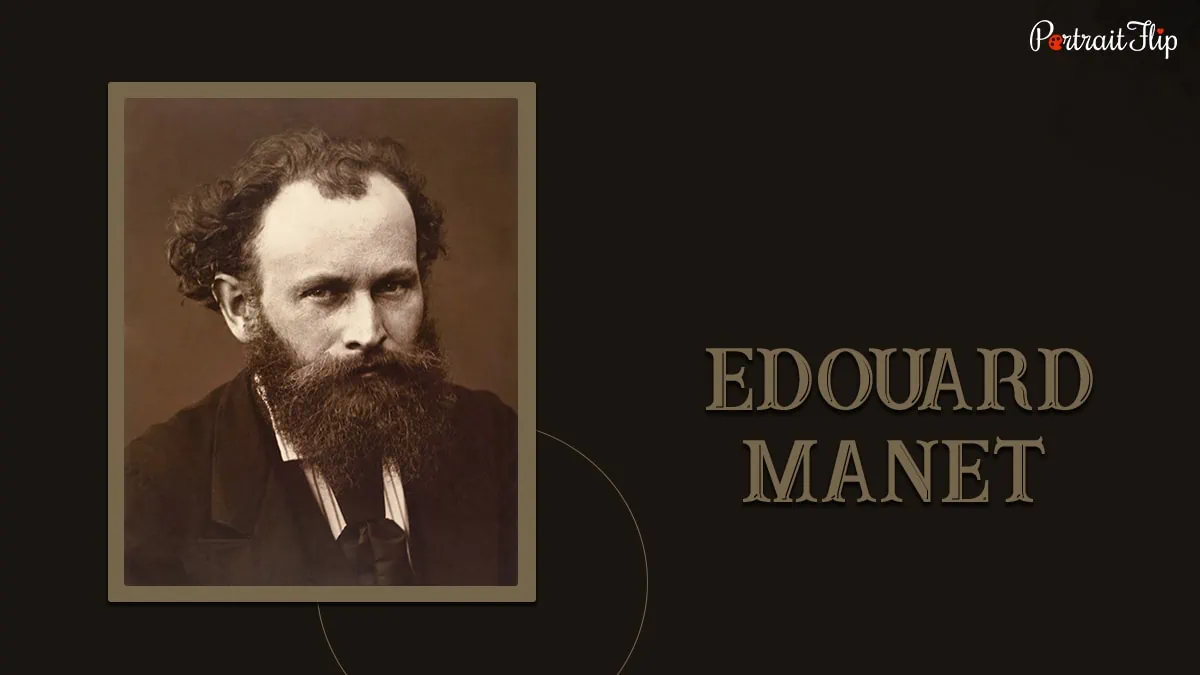
Edouard Manet was one of the very few names who formed, promoted, and expanded impressionism.
His works were as revolutionary as those of other post-impressionist artists in the 20th century.
He was the pioneer of Modern art and served as an important figure who helped transition Realism to Impressionism.
He also conceptualized and produced one of the world’s most talked about nude paintings, Olympia.
| Name | Édouard Manet |
| Born | 23 January 1832 |
| Died | 30 April 1883 |
| Notable Artwork | Olympia (Manet) |
| Art Movement | Realism and Impressionism |
| Nationality | French |
| Medium | Painting |
19. René Magritte

René Magritte was known for his bizarre compositions, which had some sort of hidden mystery and backstory.
The art that René Magritte produced would either make you wonder or amuse you to a high degree.
The background, the title, the colors, and the characters he portrayed in his works would stun his viewers, and often spark debates.
If you read more about René, you’d end up calling him an eccentric.
But in reality, he was a sad and depressed soul whose life was unimaginably affected by his mother’s sudden demise.
His work could easily be identified, but it was next to impossible to decipher the mysterious meaning behind it.
| Name | René François Ghislain Magritte |
| Born | 21 November 1898 |
| Died | 15 August 1967 |
| Notable Artwork | The Son of Man and The Lovers |
| Art Movement | Surrealism |
| Nationality | Belgian |
| Medium | Painting |
20. Mark Rothko

Mark Rothko was always honored and respected by aspiring painters and art curators of Modernism.
Rothko’s influence in the history of painting is yet to be quantified because he’s still
influencing a massive audience in the 21st century.
The famous painter was into innovative painting techniques and styles that had their roots in the color field movement.
That’s why most of Rothko’s artwork featured a plain line with impressive colors.
Rothko’s paintings were mainly made on a vertical canvas; most of them were large and rectangular.
Unlike others, he titled his art with numbers, and in later stages of his life, he used gloomier hues that signified that he was heading to a depressed and lonely life, despite making handsomely.
| Name | Markus Yakovlevich Rothkowitz |
| Born | September 25, 1903 |
| Died | February 25, 1970 |
| Notable Artwork | No. 61: (Rust and Blue) and Black In Deep Red, 1957 |
| Art Movement | Abstract expressionism and Color field movement |
| Nationality | American |
| Medium | Painting |
21. Jan van Eyck

Jan Van Eyck was a rare talent, a mastermind, and the creator of some of the world’s most meaningful pieces of art.
His artwork, The Arnolfini Portrait, inspired a large number of art lovers.
It wouldn’t be wrong to call him a famous painter ahead of his time, as he was a genius of precision and perspective.
Jan Van Eyck’s artworks were incredibly detailed and full of mystery. They were made in such a way as if real images were framed and mounted on walls.
And the beauty of Jan Van Eyck’s art was that a viewer could see the minuscule details present in each point of art.
| Name | Jan van Eyck |
| Born | c. 1390 |
| Died | 9 July 144 |
| Notable Artwork | Arnolfini Portrait and Madonna in the Church |
| Art Movement | Early Netherlandish painting, Northern Renaissance |
| Nationality | Belgian |
| Medium | Painting |
22. Georgia O’Keeffe

Georgia O-Keefe was a prominent figure of the mid 20th century, widely known as the mother of modern art.
She was immeasurably in love with art, and to pursue it, she sacrificed a lot.
Her art was incredibly meaningful, though abstract in nature.
If you look at her success, the famous female painter roared during an era of turbulence, war, and instability.
O’Keefe redefined Western American art, with most of it derived from abstract art concepts.
| Name | Georgia O’Keeffe |
| Born | November 15, 1887 |
| Died | March 6, 1986 |
| Notable Artwork | Grey Lines with Black, Blue and Yellow |
| Art Movement | American modernism and Precisionism |
| Nationality | American |
| Medium | Painting |
23. Andy Warhol

Andy Warhol is one of the most sought-after and iconic painters of the 20th century.
He knew how to shape modern art, and he did so with the aid of colors and brush strokes.
The renowned artist built his name not on religious or mythological figures but on real-life inspirations and objects.
From Muhammad Ali to soup cans, he produced several well-known pop art paintings with the utmost passion and dedication.
A legendary painter is an understatement because he was into art that transcended the formal way of art and embraced modernity to the fullest.
| Name | Andy Warhol Jr. |
| Born | 6 August 1928 |
| Died | 22 February 1987 |
| Notable Artwork | Campbell’s Soup Cans |
| Art Movement | Pop Art |
| Nationality | American |
| Medium | Painting |
24. Edvard Munch

Edvard Munch wasn’t widely famous until The Scream came out.
When Munch’s art received notable recognition, the artist saw his first breakthrough point and, in the coming years, became the most read-about painter of the 20th century.
He was a symbolist and an innovative artist who lived significantly in loneliness, grief, and mental turbulence.
The painting style he was keenly interested in would show emotions depicted in darker colors, contrasting lines, and somber tones, as if they had hampered accurate images.
He was, like other popular artists, intrigued by the study of Sigmund Freud.
That’s why his art seemed like an amalgamation of his horrifying childhood and his knowledge of human behavior.
Edvard’s The Scream is always in demand for aesthetes who like to collect replicas of famous art.
| Name | Edvard Munch |
| Born | 12 December 1863 |
| Died | 23 January 1944 |
| Notable Artwork | The Scream |
| Art Movement | Expressionism and Symbolism |
| Nationality | Norwegian |
| Medium | Painting |
25. Caspar David Friedrich
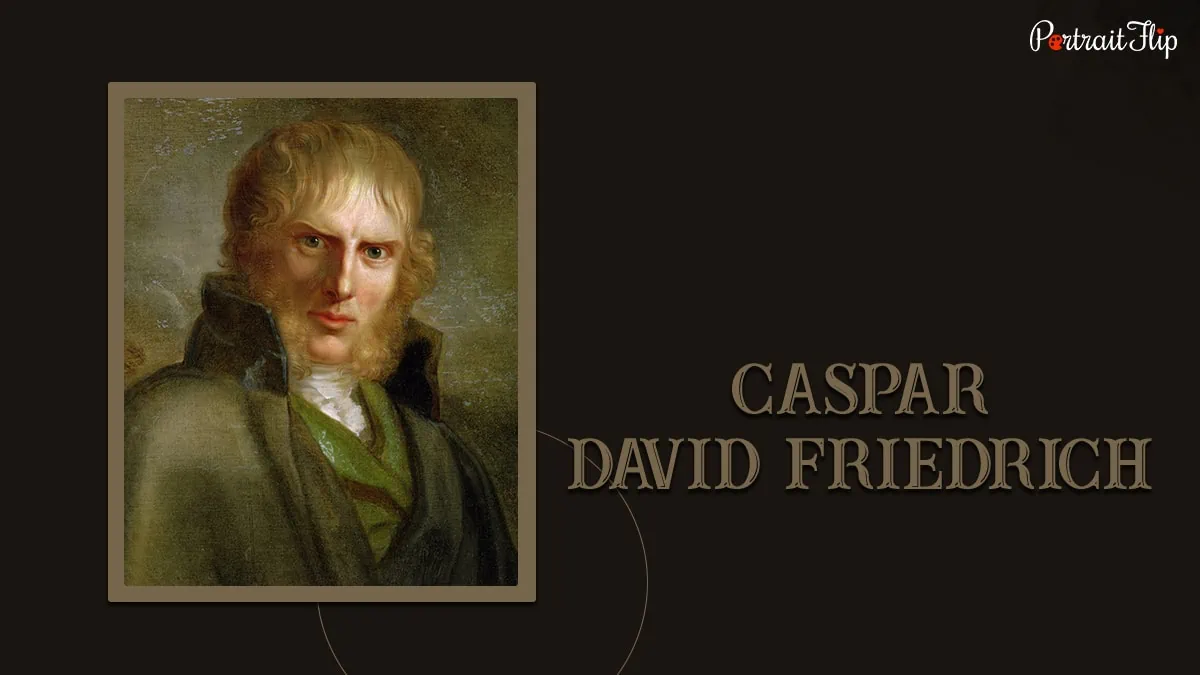
Caspar had been seen as a devotee of nature who was known for meaningful naturescape and landscape artworks.
There can’t be any famous landscape painters’ lists without him mentioned in them.
The famous painter was known for his experimental approaches and would draw figures and landscapes in different settings.
Sometimes it’d be figures against night skies, morning mists, barren trees, or Gothic ruins.
He was even seen as a prominent artist of Romanticism, as his works revolved around psychological complexity.
His weapon was landscape art, which he used to convey the deepest messages, which no painters at that juncture had ever done.
| Name | Caspar David Friedrich |
| Born | 5 September 1774 |
| Died | 7 May 1840 |
| Notable Artwork | The Monk by the Sea and Wanderer above the Sea of Fog |
| Art Movement | Romanticism |
| Nationality | Germany |
| Medium | Painting |
26. Henri Matisse

Henri was one such famous painter who brought the Fauvism movement into existence.
He was as legendary as Picasso was because of his style and ideology, which seemed controversial to some folks.
Basically, he was a magnificent result of the post-impressionist movement, which enabled painters to use colors spontaneously.
That’s why his creation—Fauvism—is mainly characterized by bright primary colors and thick, flat brushstrokes.
He has known the expressive language of colors and drawing; thus, his perspectives and beliefs can be seen vividly in his art.
27. Francisco Goya

Francisco Goya is admired for his metamorphosis in art.
Sometimes he worked as a Fresco painter, and other times he worked as a sketch artist or an engraver.
He was widely known for his romanticism paintings, and in his initial days, he even worked solely for the Spanish Crown.
Religious and mystical art were in his blood, and the way he glorified subjects was massive and unimaginable.
Some of them were heavily criticized and even categorized as controversial pieces of work because of the depiction of nudity, atrocities, and gut-wrenching elements.
| Name | Henri Émile Benoît Matisse |
| Born | 31 December 1869 |
| Died | 3 November 1954 |
| Notable Artwork | Woman With a Hat |
| Art Movement | Fauvism, Modernism, and Post-Impressionism |
| Nationality | French |
| Medium | Painting |
28. Titian

Titan was undisputedly the greatest artist of the seventeenth century, and he built his reputation by experimenting with and using rare colors.
The standard he set for others was astounding, thanks to his profound knowledge of colors and mythological scenes and characters.
Titian was one such famous painter who largely impacted his own contemporaries and who also stood by his principles and kept producing art for the goodwill of his people.
He was the leading and most famous painter of Venice, and undoubtedly one of Italy’s most loved and prolific artists.
| Name | Tiziano Vecellio |
| Born | c. 1488/90 |
| Died | 27 August 1576 |
| Notable Artwork | Venus of Urbino |
| Art Movement | Venetian school |
| Nationality | Italian |
| Medium | Painting |
29. Eugene Delacroix

One word for this famous artist: Genius!
Eugene was such an exceptional and rare artist who changed millions of French lives.
He had a thick and thin artistic journey, but it was truly impactful as his works were taken seriously and with admiration wherever they appeared.
One can’t forget Liberty Leading The People—Eugene’s artwork stored in the Louvre, which single handedly broke several records.
Eugene’s contribution was so remarkable and unexplainable that he was recalled and remembered as one of the most important figures of Romanticism!
| Name | Ferdinand Victor Eugène Delacroix |
| Born | 26 April 1798 |
| Died | 13 August 1863 |
| Notable Artwork | Liberty Leading the People |
| Art Movement | Romanticism and the Romanesque style |
| Nationality | French |
| Medium | Painting |
Ending Note
Art is a creative endeavor that is evolving as new artists emerge and leave a profound effect on the course of art with their talents.
These artists not only leave an irreplaceable imprint, but they also drive a strong force of wisdom for future generations with their body of work!
There are so many of us who look for inspiration in art, as it has the true power to transport your being and make you think outside the box
If the styles of these legends have inspired you in any way, then you could now get a replica painting of your favorite famous artist from PortraitFlip!
Frequently Asked Questions
Leonardo Da Vinci is titled as the most famous painters of history.
Caravaggio was the prominent Baroque painter who established himself as a master of chiaroscuro.
Some of the famous painters who contributed during the modernism period are: Pablo Picasso, Claude Monet, Frida Kahlo, etc.


